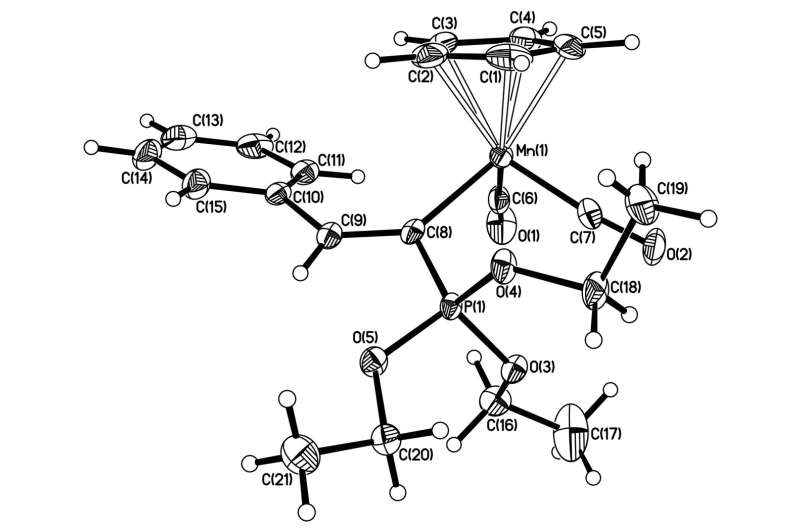Chemists discover a new formation mechanism of anti-cancer substances

RUDN University chemists revised the formation mechanism of organophosphorus complexes with metal. The results of the study may help in the production of organophosphorus compounds, polymers with specified properties as well as in the synthesis of anti-cancer drugs, as reported by Journal of Organometallic Chemistry.
The scientists are working on methods to create substances with carbon-phosphorus chemical bonds using organometallic compounds. The result of such reactions is the formation of organophosphorus complexes, biologically active organic molecules containing phosphorus atoms. Stearyl phosphate complexes are of high interest. They are an important class of molecules called vinylphosphonates, widely used in organic chemistry. Various organophosphorus compounds are synthesized from them. Such substances are used extensively in cellular research and are promising for the development of anti-cancer drugs.
Recently, scientists have been actively exploring rhenium (Re) metal complexes for their possible use as anti-cancer drugs. Organometallic complexes with CO ligands can be used as so-called CO-releasing molecules for the destruction of cancer cells. Organometallic complexes with rhenium are also used in infrared spectromicroscopy of cells.
The authors selected vinylidene complexes of manganese (Mn) and rhenium (Re) as starting materials, joining trivalent phosphorus (trialkyl phosphites, phosphonites and phosphinites) in a combination reaction. The chemists supposed that the result would be styrylphosphonate complexes, but the mechanism of this transformation was not entirely clear. "Having certain experience in the study of the interaction between vinylidene complexes of transition metals and organic phosphorus derivatives, we assumed that the mechanism of the chemical reaction that they proposed earlier does not correspond to reality and requires a more detailed investigation," says co-author of the study Alexander Smol'yakov.
The chemists determined the structure of the intermediate and final products of the reactions of manganese and rhenium vinylidene complexes and their derivatives using spectroscopic methods, and also selected the necessary conditions to perform the reaction for the isolation of intermediates in the form of single crystals for the purpose of studying them by X-ray diffraction.
The researchers found that the reaction does not proceed according to the Michaelis-Arbuzov reaction mechanism, as previously thought, but another way. The scientists proved that during synthesis of styrylphosphonate complexes, some byproducts form. Their decomposition in water leads to the formation of the desired compounds.
The transformations discovered by RUDN University scientists may be used to develop methods for preparation of vinylphosphonate derivatives from terminal alkynes (carbons with a triple bond at the ends of the molecule), which is important for the purposes of organic synthesis.
In the future, RUDN University scientists are going to expand the range of organometallic complexes they work with. This will allow a better understanding of the possibilities of multiple (not single) metal-carbon bonds complexes chemistry.
More information: Kamil I. Utegenov et al, Adducts of Mn and Re vinylidenes with P–OR nucleophiles: Hydrolysis rather than the intramolecular Michaelis–Arbuzov rearrangement, Journal of Organometallic Chemistry (2017). DOI: 10.1016/j.jorganchem.2017.10.008
Journal information: Journal of Organometallic Chemistry
Provided by RUDN University



















